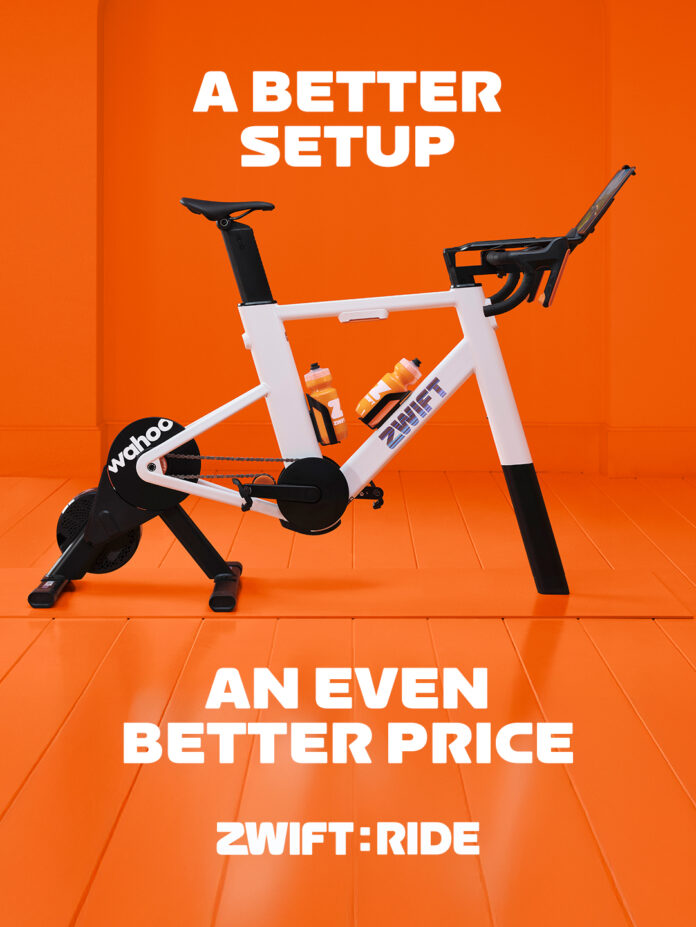Colorado-based Caveworks recently announced the RIVET. Designed “specifically for indoor use with thru-axle direct-drive smart trainers, and compatible with fork-mounted accessories like the Wahoo KICKR Climb,” the RIVET is a product that arguably sits between the Zwift Ride and Elite Square in both functionality and pricing.
Pricing and Availability
The RIVET is expected to begin shipping in October 2024 and is available for pre-order in three different configurations:
- Frame Only ($749 USD, introductory special: $699)
- Single-Speed ($999 USD, introductory special: $949)
- Geared (12-Speed Shimano GRX) ($1399 USD, introductory special $1,329)
The single-speed and GRX versions ship with three different crank lengths: 170mm, 172.5mm, and 175mm.
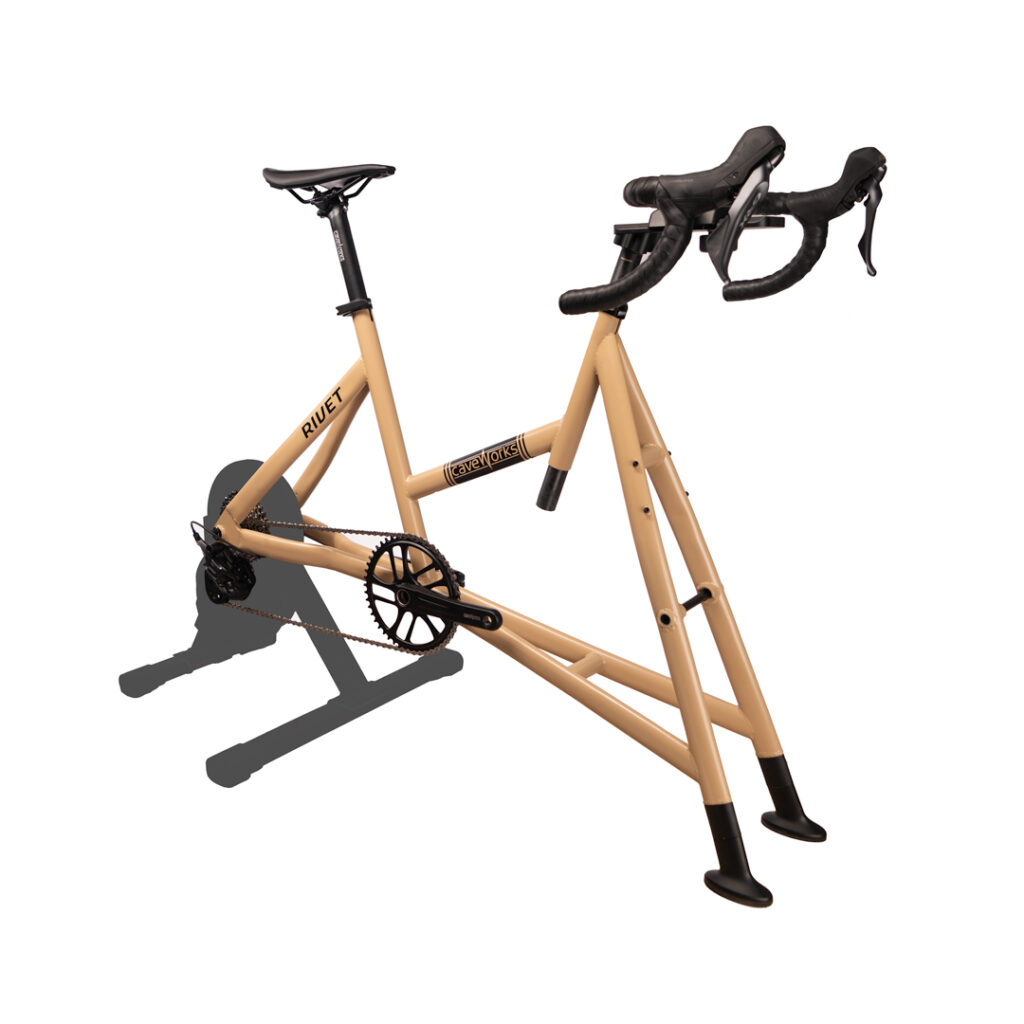
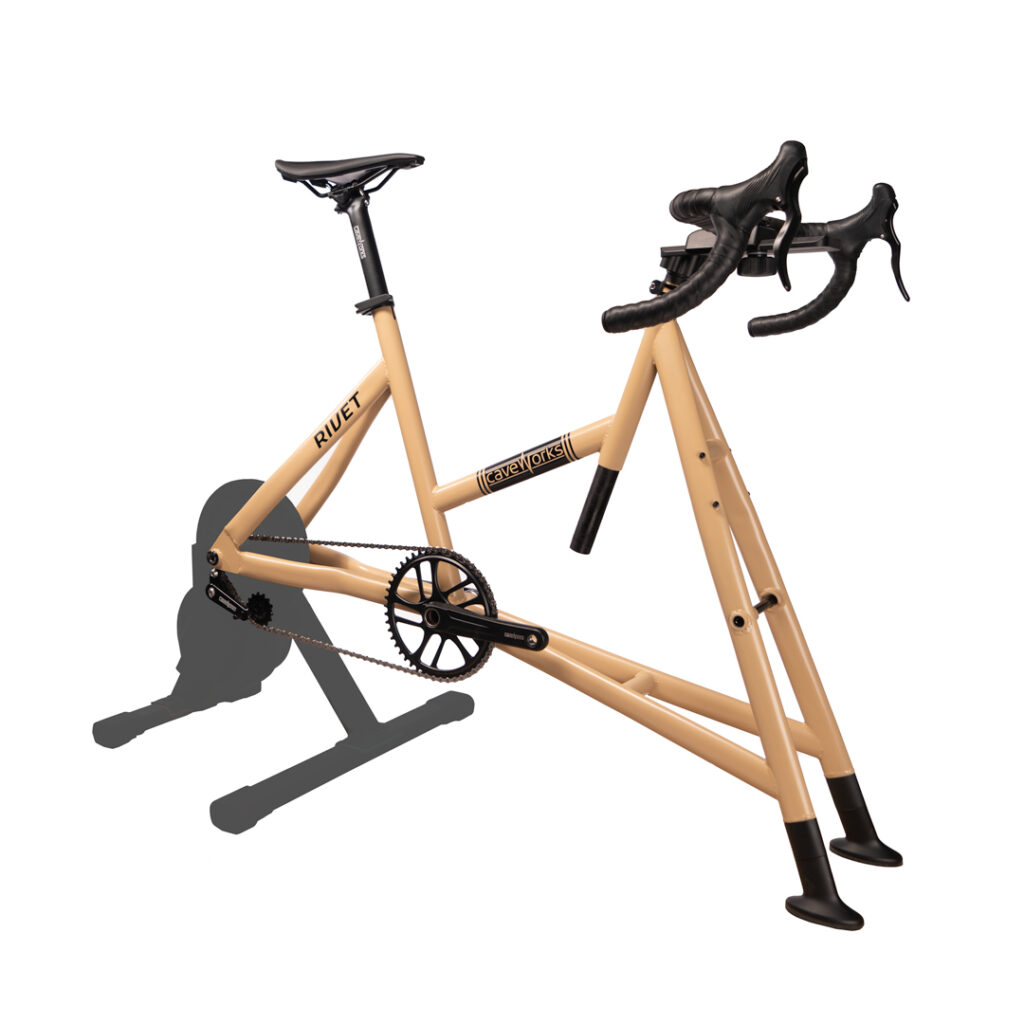
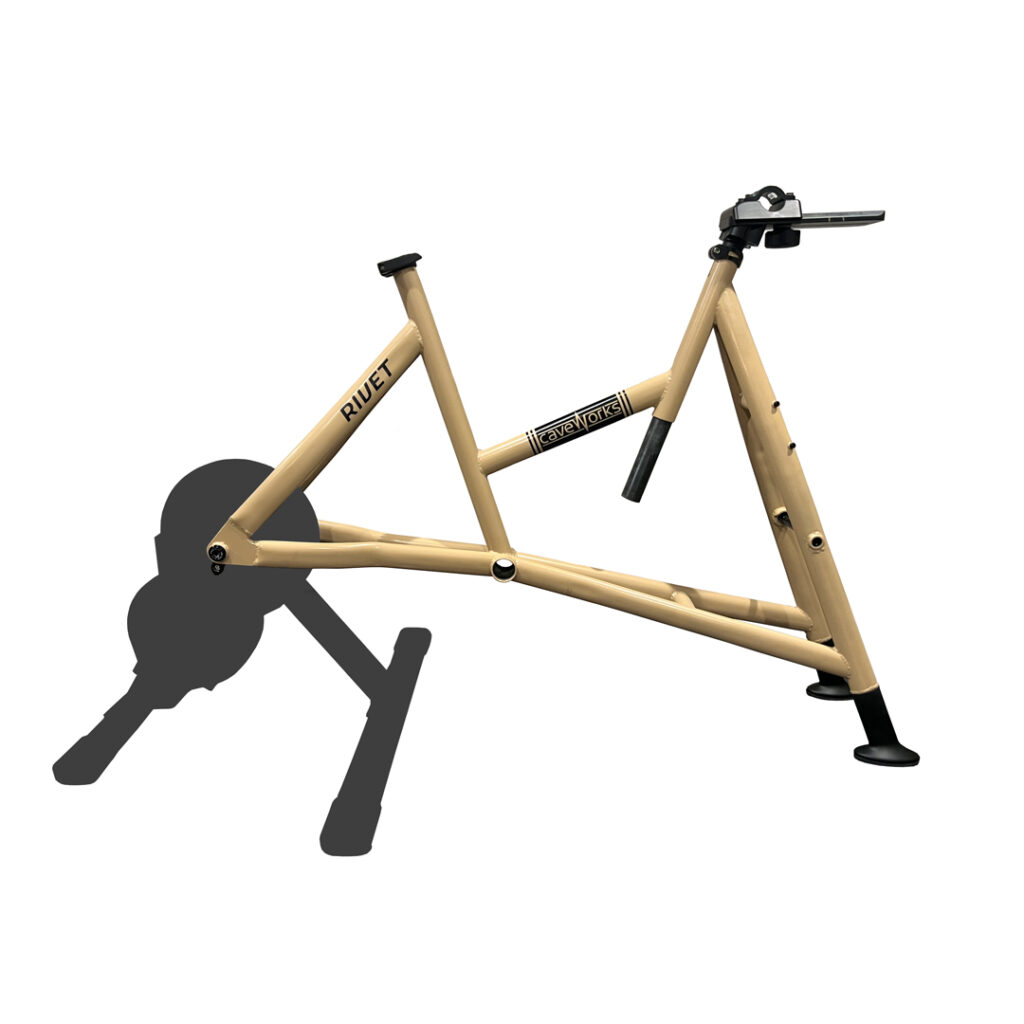
Features and Specs
- 4130 steel frame, powder coated for durability
- 12x142mm rear axle spacing, UDH compatible
- 12x110mm front axle spacing (offering enhanced front-end rigidity and compatible with the Wahoo Kickr Climb gradient simulator)
- Standard 30.9mm seat post and stem tube diameter
- Standard 68mm threaded bottom bracket
- Removable front feet with spacers to accommodate third-party trainers of varying rear axle heights
- Mounting for 2 water bottle cages
- Stem: proprietary Caveworks adjustable stem, 6061 aluminum, anodized black
- Stem adjustment: 120mm of continuous fore-aft adjustment, all achieved with a quick turn of the adjustment knob.
- 143mm saddle with chromoly rails
The single-speed and geared versions include these additional features/specs:
- 48-tooth front chainring
- Oversize 14t ceramic bearing pulley (single-speed)
- Shimano GRX 12-speed (geared)
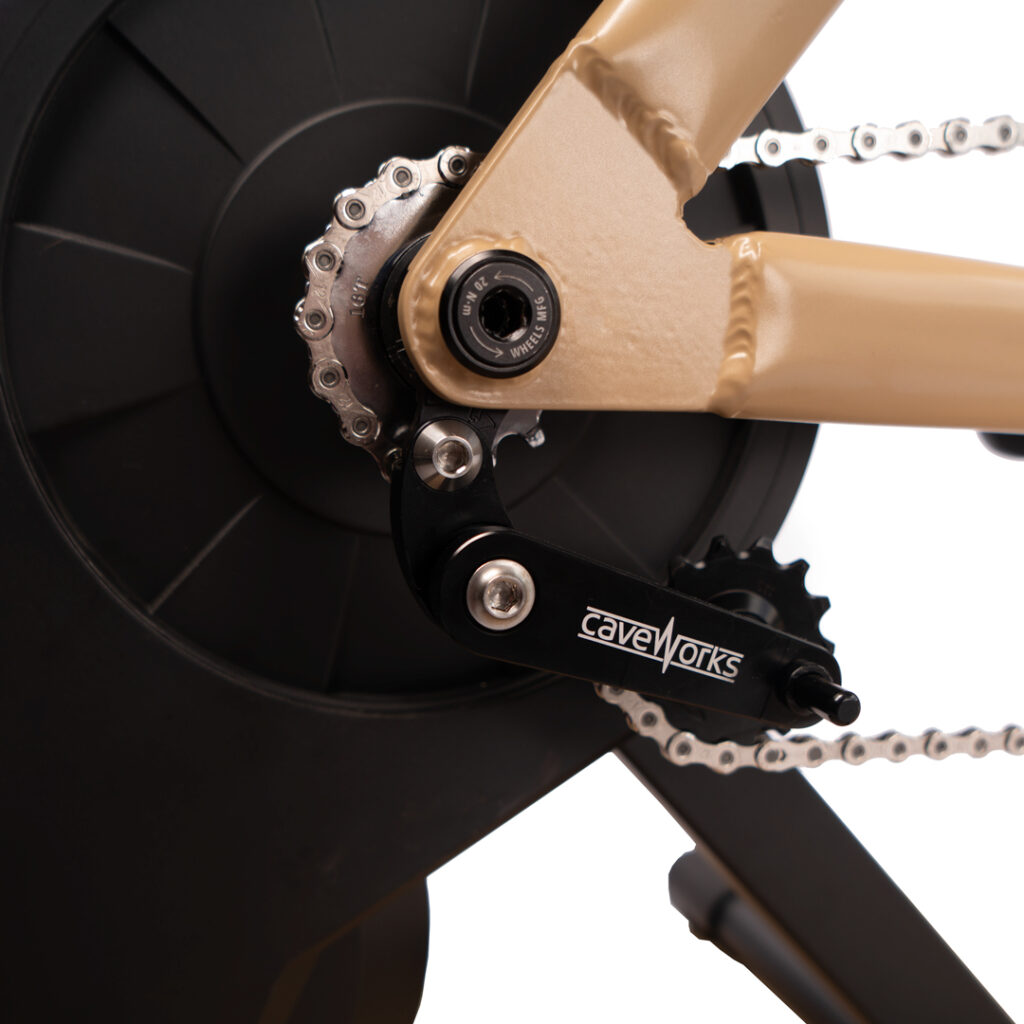
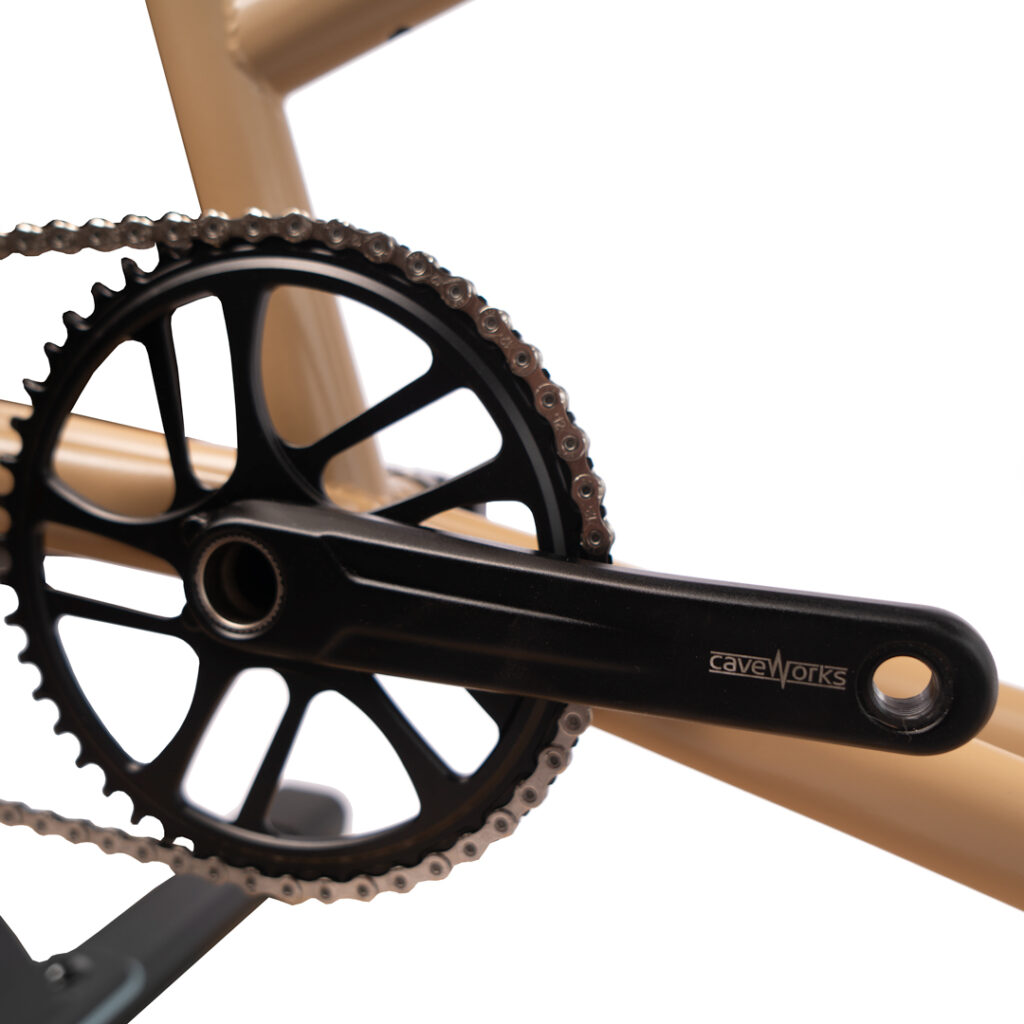
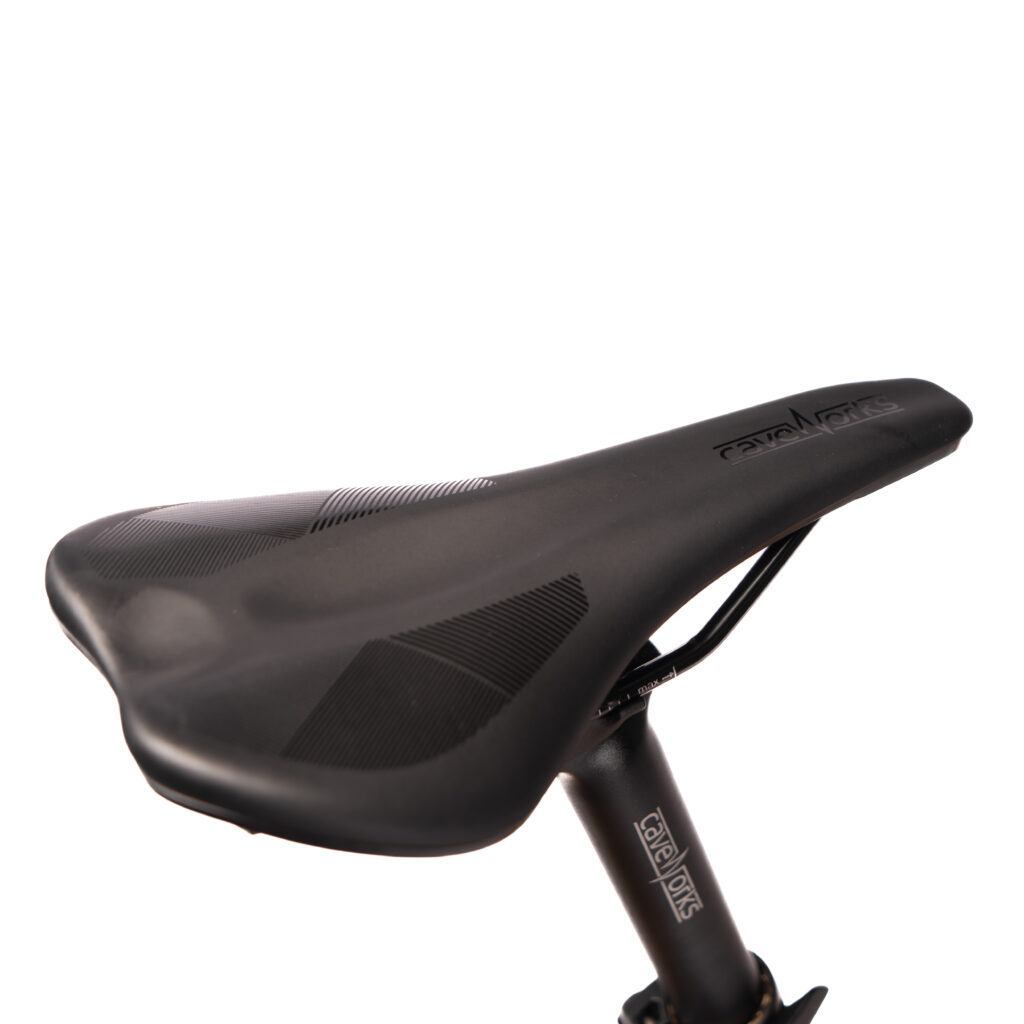
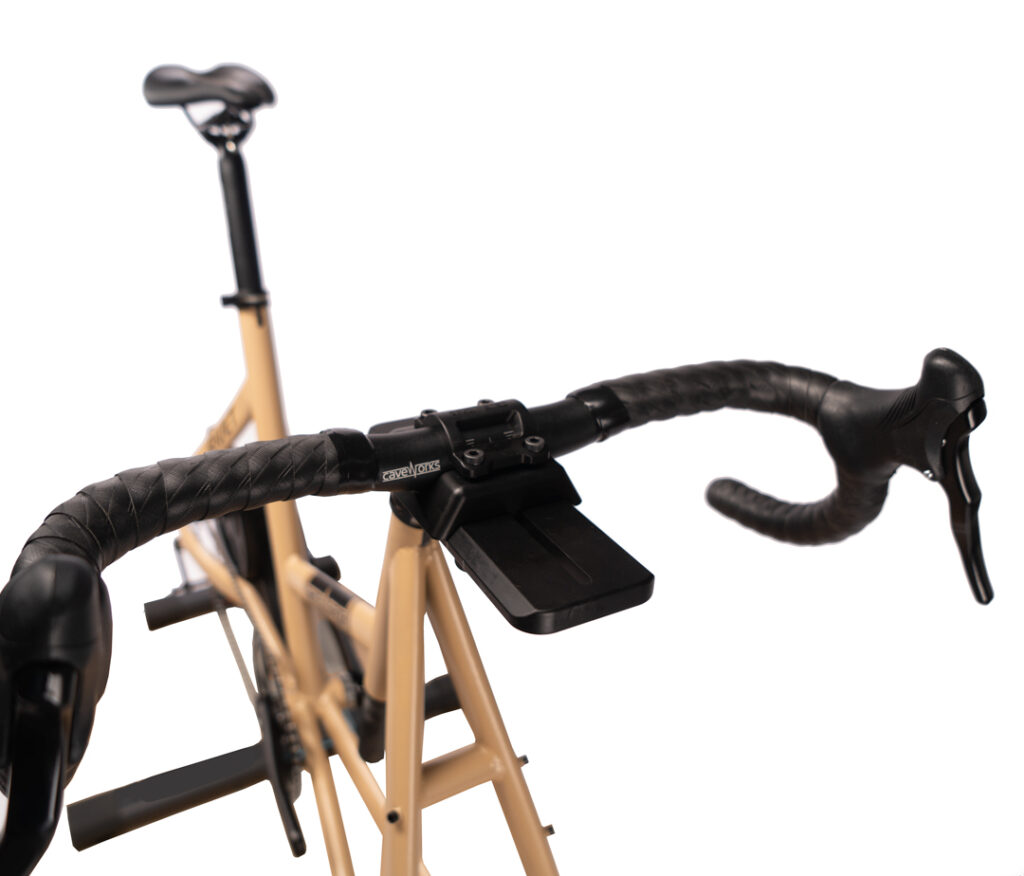
RIVET vs. Zwift Ride
The RIVET obviously invites comparisons to the Zwift Ride. What are some key differences?
- Price: The RIVET is priced a bit higher than the Zwift Ride, if you remove the trainer from the Zwift Ride pricing. Theoretically, once Zwift begins selling the Zwift Ride frame as a standalone item in the fall, it will be priced below the single-speed version of the RIVET.
- Fit: Zwift Ride fits riders 5’-6’6”, while the RIVET fits rides from 4’10” to 6’6″.
- Compatibility: Zwift Ride only fully works with Zwift, due to virtual shifting requirements. RIVET offers a 12-speed version that would work with all platforms.
- Frame-Only vs Full System: the RIVET is sold as a standalone frame, while the Zwift Ride is currently sold with a trainer.
- Climb Simulator Compatibility: RIVET is compatible with the Climb or Elite Rizer, while Zwift Ride is not.
- Crank Length Options: Zwift Ride ships only with 170mm cranks, while the RIVET comes in 170mm, 172.5mm, and 175mm versions.
About Caveworks
Jason Haney is the CEO and founder at RIVET. Based in Lakewood, Colorado, he’s an avid cyclist, and a level 62 Zwifter who has been on the platform since 2018. His right-hand man is Anthony Lenz, President and co-designer at Caveworks. Anthony lives in Fort Collins, Colorado, and is also an avid cyclist (plus a level 19 Zwifter). The two men have been close friends since they meet as employees of the Full Cycle bike shop in 2009.
Jason tells the story of the RIVET’s conception to its eventual launch:
The initial idea for the RIVET was born after reflecting on my first year(ish) on Zwift; so, roughly in 2019. I had been riding a beautiful custom gravel bike (made by Scissortail Cycles out of Norman, OK — great framebuilder 🙂) on my Wahoo Kickr and, despite the obvious net benefits of indoor riding, was nonetheless experiencing some frustrations:
For one, I was pouring sweat on my beautiful machine. Absolutely destroying it. It was painful watching the corrosive salts accrue on my Chris King headset and bottom bracket, around the cockpit hardwear, on the cranks, etc.
For another, I was feeling the way indoor riding was loading the bike as I rode. The way the rear triangle was fixed in place, forcing the frame to bear up to the pushing on the pedals, the pulling on the handlebars, the rocking in sprints. The frame was visibly moving so unnaturally, absorbing the forces and loads while suspended between the fixed points of the trainer and the front wheel. It’s not that I worried my steel frame would fail from these loads (though I suspected certain carbon frames might be in more danger), but rather just that it was so clear in my mind that this is not what my bike was designed to do. That alone, that simple fact, bothered me. Indoor riding is fun and useful, right? It’s a discipline now, and worthy of the respect that other disciplines in cycling receive. So why have a key component of one’s indoor setup that is (1) not designed for it and (2) substantially over-invested in?
And lastly, all the other frustrations around taking the bike on and off the trainer, the minor derailleur adjustments between the trainer and the wheel, and the inability to keep the bike tuned for outdoor opportunities, etc., all were sources of frustration as well.
This percolated for a while, mostly as a “why isn’t someone working on this?” thought, and I did a fair bit of searching for what surely must be out there — the economical path to an indoor-specific machine. Then, in 2021, convinced that no one was making progress on this, I drew the concept for what became the RIVET and started looking into how to bring it to life.
The core goals were to design something that: (1) had the parts required for indoor training and only those parts; (2) threaded the needle between capturing a minimum standard of high performance without tipping into the territory of overinvesting in lightweight, or in the highest-end metals or materials, or the various other aspects that can take an outdoor bike from the $2k-$3k range into the $10k+ range; (3) proved that (1) and (2) were achievable at a reasonable expense; and (4) that was durable, both with respect to the unique forces and loads of indoor riding and the corrosive impact of sweat.
In February 2022, I formed caveworks, Inc. I hired engineering and product design support. We dove in. Other goals were added to the list, like ensuring that the frame is adaptable across bicycle types for a large range of rider sizes. The geometry, the lynchpin of which is the headtube and its position with respect to the bottom bracket, has its own interesting development story and is the result of extensive research and analysis of outdoor bike geometries from road to endurance road to gravel to mountain bikes. It covers all of them. So, although that’s probably the strangest aesthetic aspect of the RIVET’s design, especially if one’s eye is looking for parallels to an outdoor bike, it nonetheless brings a level of function that offers its own kind of beauty (if you’ll pardon my obvious bias 🙂).
Four prototypes followed, all moving at a slower pace than I might have liked had I been in a position to do the romantic thing, quit my job, and go all in. But my job is why caveworks exists. The company is self-funded. So I continued refining the design around life’s other demands. I have 5,572 miles logged on caveworks prototypes. Anthony has hundreds of miles logged on prototypes 3 and 4 as well, as do other key providers of input across our network.
There came a moment where I thought I might be able to finish it ahead of winter ’23/’24 but, due to being pulled in so many directions, could not get it across the finish line in time. This meant making the very frustrating decision to give up on that goal and instead reload for the next year. It also made it crystal clear that I could not be the sole driver behind caveworks’ progress if this was actually going to become something.
Anthony was hired in mid-October, 2023, and Jason says, he “was the missing piece. He’s the beating heart of caveworks today.”
Take a Look
Here’s a walkthrough of the RIVET from DesFit:
Concluding Thoughts
I love watching riders solve problems they’re finding in the indoor space. Jason’s story is one of passion, innovation, and perserverance
It’s also fun to see new products launch in this space. In fact, the RIVET is the third dedicated indoor frame we’ve seen launched in the past few months. Does this indicate a trend away from heavy, expensive smart bikes toward a more modular, affordable smart frame+trainer approach? I think so.
Questions or Comments?
Share below!
